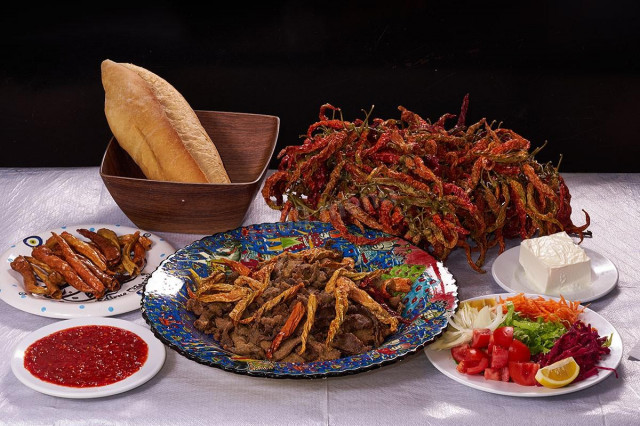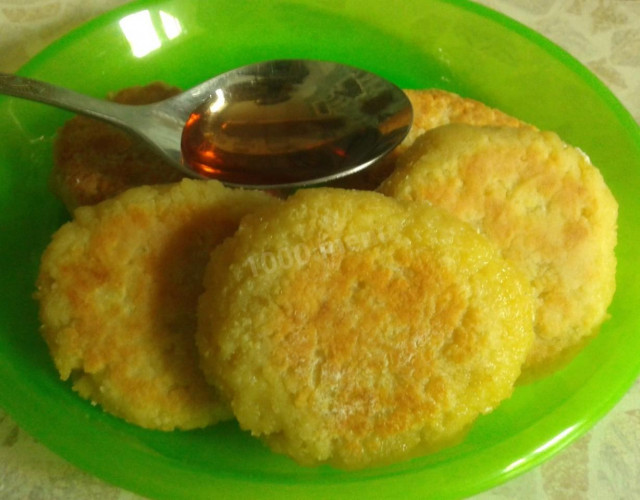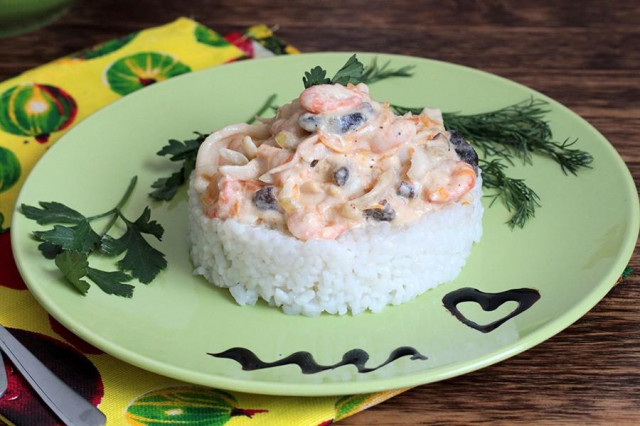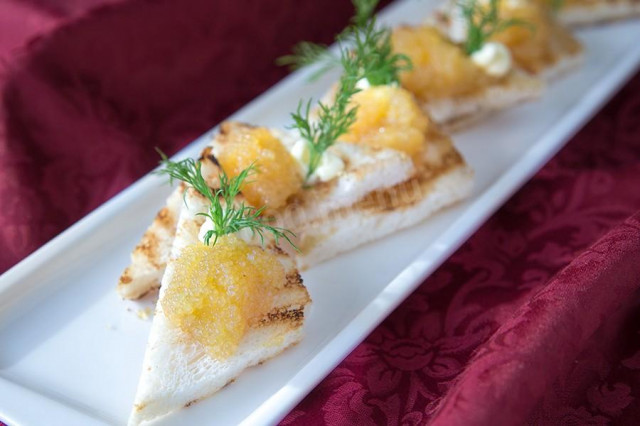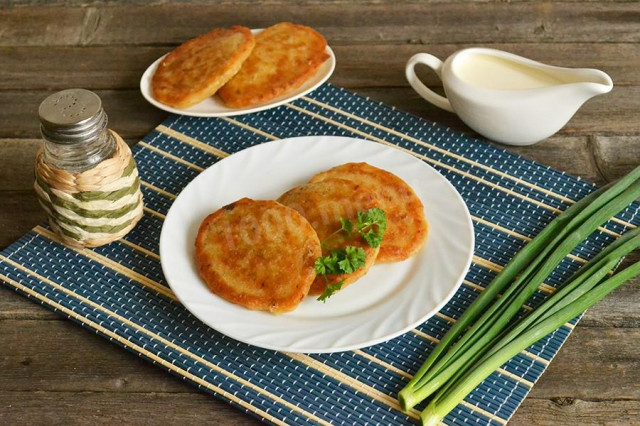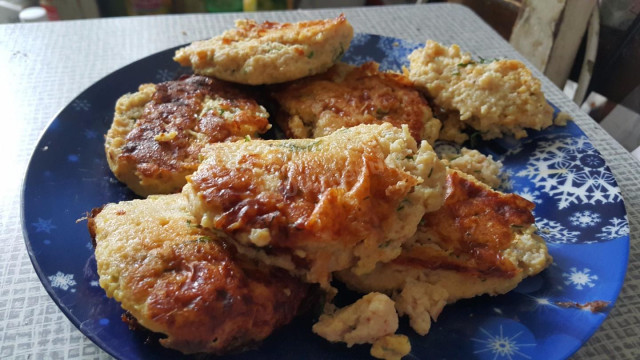Composition / ingredients
Step-by-step preparation
Step 1:
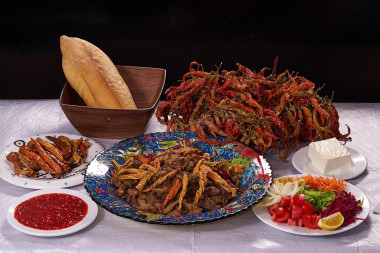
Carefully removing the films, removing the ducts, cut the liver into rather thin slices - about like fish on sushi.
Step 2:
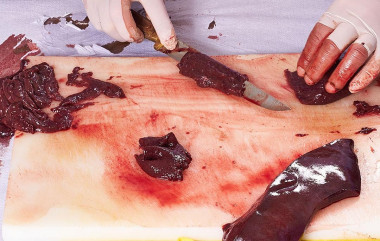
Meanwhile, pour quite a lot of oil into a spacious cauldron or a deep frying pan. Looking ahead, I will say that the fat content of this dish does not depend on the amount of oil that will be used, but the success depends directly. There will be little oil - everything will turn out to be some kind of trash, and not Edirne-dzhigar! Dzhigar is a liver, and in Turkish, and in Azerbaijani, and in Uzbek. It seems that in all Turkic languages this spare part is called the same.
Step 3:
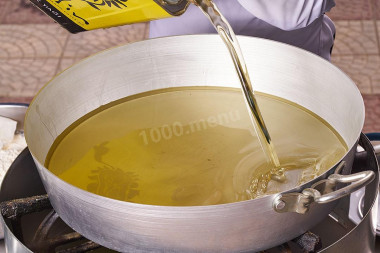
Add salt to the liver, and put flour next to it
Step 4:
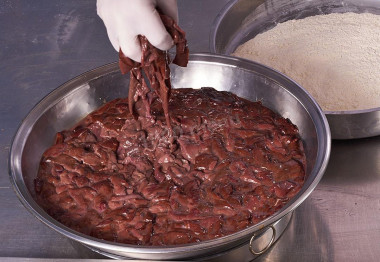
Well, we roll a handful of liver in flour.
Step 5:
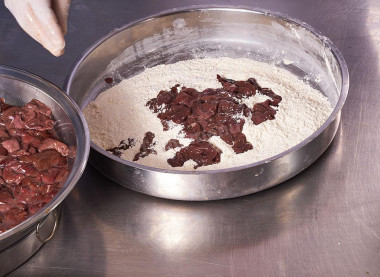
Shake off properly - what stuck, then stuck, we don't need extra flour in oil!
Step 6:

And into the heated oil
Step 7:
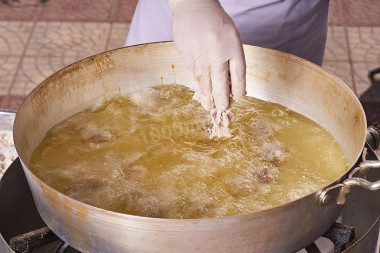
Stir with a slotted spoon so that the liver does not stick together in a lump.
Step 8:

35-40 seconds and this is the color!
Step 9:
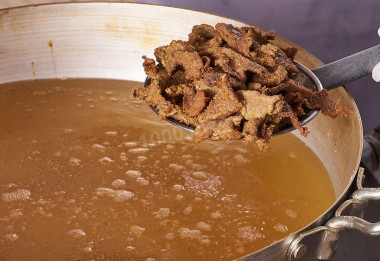
Now this is the dried pepper. Young, unripe pepper was collected and dried in the shade. It is not too spicy, it is moderate, but at the same time quite tasty, fragrant. I don't know how to replace it for you, but I have a similar Spanish, and if anything, I'll take the usual Bulgarian pepper, even if not dried. Although cut into slices and dry in an ordinary slightly open and barely hot oven, as a blank, otherwise this pepper always disappears - a trifling matter!
Step 10:
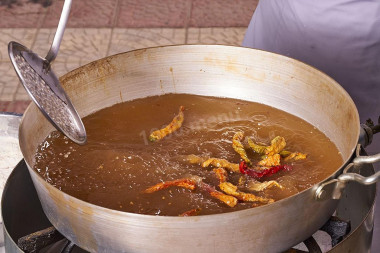
In general, pepper is also in the oil. And not even fry, but just reheat. I believe that those pieces of liver that will be fried in the second batch will turn out to be more fun, more perky, tastier!
Step 11:

Well, you see? They have become, as it were, even more dry, brittle, no, not even so - crunchy. While I was eating liver, I crumbled a few pieces and it was delicious.
Step 12:

Now look at the pitch. A bunch of peppers on the back and right is a decoration, it's still fresh pepper. On the left and front - tomato and fresh pepper sauce. Yes, grate tomatoes and peppers on a grater, warm them up with a drop of oil, add salt On the right are fresh vegetables and onions, because why cook what you can eat raw, getting vitamins and benefits? Moreover, there is a yogurt nearby. Yes, yogurt is in Edirne, it has the consistency of fresh mozzarella, it can be cut
Very tender liver! And it crunches outside!
Caloric content of the products possible in the composition of the dish
- Tomatoes - 23 kcal/100g
- Acedophilin of 3.2 % fat content - 58 kcal/100g
- "rastishka " - 122 kcal/100g
- Danone drinking yogurt - 76 kcal/100g
- Drinking yogurt "agusha" - 87 kcal/100g
- "aktimel" natural - 83 kcal/100g
- Danone yogurt with 2.2% fat content - 96 kcal/100g
- "mazhetel" - 48 kcal/100g
- Ermann fat yogurt - 152 kcal/100g
- Yogurt with 3.5% fat content - 68 kcal/100g
- Natural yogurt with 1.5% fat content - 48 kcal/100g
- Low-fat milk yogurt - 38 kcal/100g
- Sweet pepper - 27 kcal/100g
- Ground black pepper - 255 kcal/100g
- Vegetable oil - 873 kcal/100g
- Salt - 0 kcal/100g
- Wheat flour - 325 kcal/100g
- Chili pepper - 40 kcal/100g
- Beef liver - 130 kcal/100g

